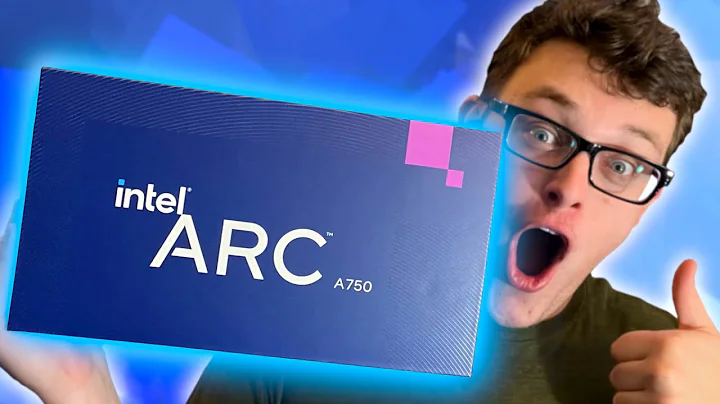Unleash Unparalleled Performance with AMD Ryzen 9 5950X
Table of Contents:
- Introduction
- Zen 2 Microarchitecture
- Zen 3 Microarchitecture
- Layout of Zen 2 Processor
- Layout of Zen 3 Processor
- Benefits of Zen 3 Layout
- Scalability of Zen 3
- Gaming Performance Improvement in Zen 3
- Direct Core Communication in Zen 3
- Conclusion
Article:
🌟 Introduction
The eagerly anticipated Zen 3 microarchitecture has finally made its appearance, and it brings with it a host of performance improvements over its predecessor, Zen 2. In this article, we'll dive deep into the details and explore the physical layout differences between Zen 2 and Zen 3, uncovering the architectural advancements that make Zen 3 a Game-changing innovation.
🏢 Zen 2 Microarchitecture
Before we delve into the intricacies of Zen 3, let's take a moment to revisit the Zen 2 microarchitecture. The AMD Ryzen 7 3700X, a third-gen Ryzen processor, serves as the perfect starting point for our comparison. This processor comprises one compute die with eight cores and one I/O die responsible for handling PCI Express, SATA, USB, and other functionalities. Essentially, all third-gen Ryzen processors follow a similar layout pattern.
🏗️ Layout of Zen 2 Processor
Let's zoom in on the compute die to understand its composition better. At the heart of the Zen 2 processor lies a sizeable L3 cache, boasting a generous 32 megabytes storage capacity. Surrounding the cache are four cores on each side, totaling to eight CPU cores in the entire layout. This configuration has been the cornerstone of Zen 2 microprocessors.
🌌 Zen 3 Microarchitecture
Now, let's shift our focus to Zen 3 and analyze its physical layout. While the Diagram presented doesn't depict the exact chip layout, it provides a clear representation of the architectural changes. Once again, a 32MB L3 cache makes an appearance, aligning it with Zen 2. However, the most significant difference lies in the arrangement of the cores.
🏗️ Layout of Zen 3 Processor
Unlike Zen 2, where the cores were spread out across the die, Zen 3 introduces a monumental alteration - all eight cores are now consolidated into a single, massive block. This change brings numerous benefits, especially in terms of scalability. By grouping four cores together, AMD can seamlessly combine them to form even larger blocks. The design empowers AMD to achieve up to 16 cores in a Socket AM4 or a staggering 64 cores in Threadripper systems, achieving unparalleled scalability.
✨ Benefits of Zen 3 Layout
The new layout not only enhances scalability but also bolsters gaming performance and single-thread performance, a crucial aspect for responsive computing. By bringing all the cores together, Zen 3 eliminates communication penalties that arose while traversing between different core groups. Additionally, this consolidation effectively doubles the amount of cache accessible by each core. As a result, Zen 3 processors offer 32MB of direct cache access per core, compared to the 16MB on Zen 2.
⚡ Scalability of Zen 3
The architectural changes in Zen 3 enable remarkable scalability, allowing for the construction of CPUs with an increased number of cores. This facet of Zen 3 is immensely beneficial in scenarios where powerful processing capabilities are required, such as high-end gaming, content creation, and professional applications. Whether it's the compelling 16-core CPU in Socket AM4 or the astonishing 64-core Threadripper, Zen 3 can deliver the necessary performance.
🎮 Gaming Performance Improvement in Zen 3
Gaming enthusiasts will be thrilled to hear about the significant gaming performance improvements that Zen 3 brings to the table. The enhanced layout of Zen 3 chips, with all cores communicating directly with each other, drastically reduces latency and improves synchronicity. These architectural advancements have the potential to elevate gaming experiences to new heights, ensuring a smooth and immersive gameplay session.
📞 Direct Core Communication in Zen 3
In Zen 2, core communication necessitated traversing through the I/O die. However, in Zen 3, with the revised layout, core communication is Simplified. Cores can now directly communicate with each other, eliminating the need for any detours. This seamless and efficient communication pathway within the chip enhances overall performance.
💡 Conclusion
In conclusion, the Zen 3 microarchitecture pioneers a remarkable design change by consolidating all cores in a single large block, optimizing communication pathways, and boosting gaming and single-thread performance. With its superior scalability, remarkable gaming performance, and efficient core communication, Zen 3 opens up a new realm of possibilities for gamers, content creators, and professionals alike. Get ready to experience an unparalleled level of performance with the Zen 3 architecture.
Resources:
 WHY YOU SHOULD CHOOSE TOOLIFY
WHY YOU SHOULD CHOOSE TOOLIFY
































